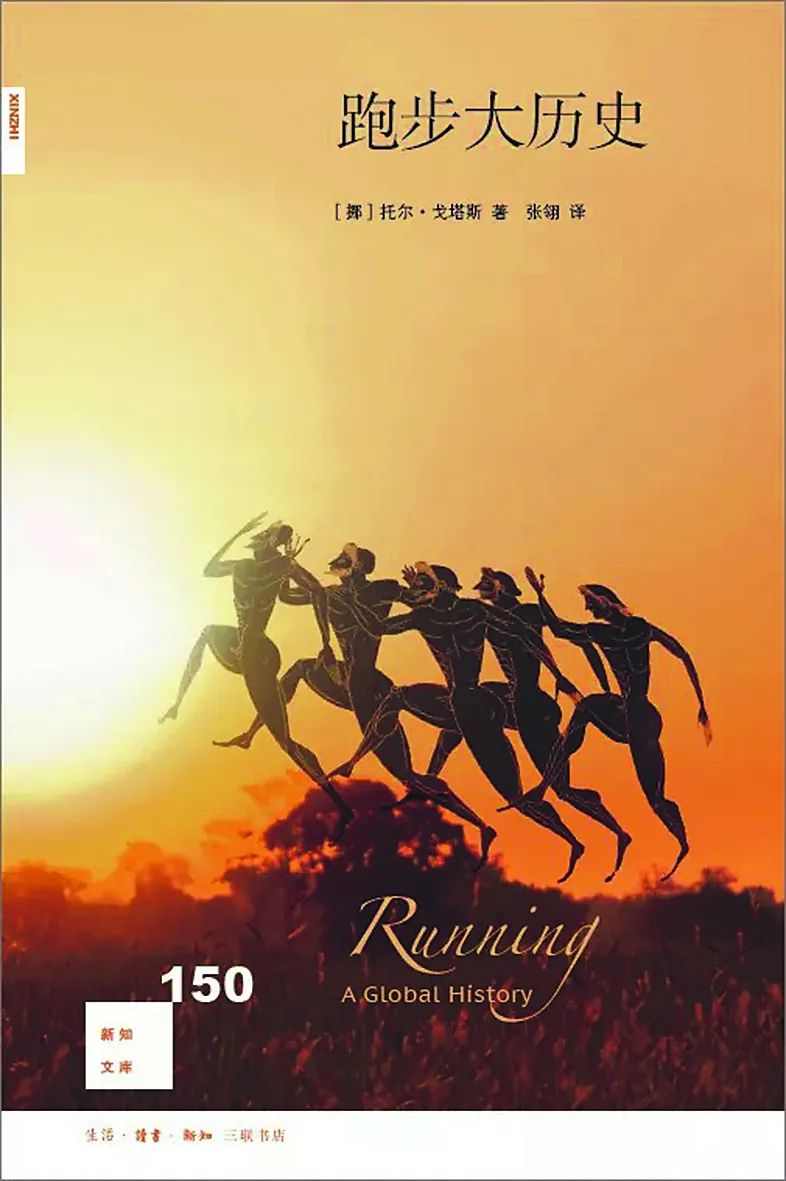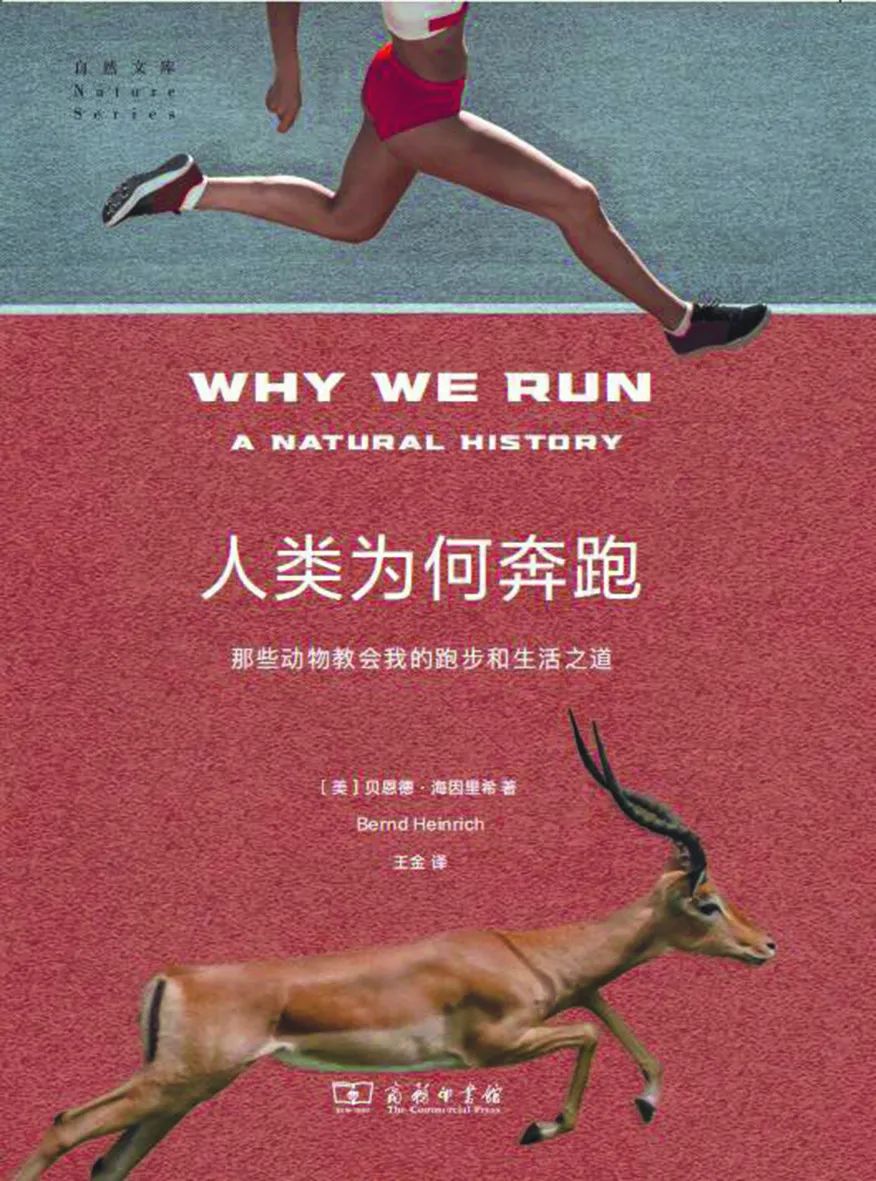Why are there so many people who love to run in the circle of friends
Author:Journal of China Science Time:2022.08.28
Text | Zhang Tiankai
There is no shortage of runners in the circle of friends of everyone. They not only love to run but also love "show", open the circle of friends, always see their trajectory maps, pace tables, and of course sweaty selfies.
Why do modern people love to run? In addition to the well -known reasons such as exercising and refining the spirit, there may be deeper historical and scientific origins. Because some biologists and anthropologists believe that 2 million years ago, the ancient ape could evolve into people because they ran for a long time.
Why do people run?
For this question, many research and books have given answers. Although the conclusions and answers are all kinds of color and variety, they cannot exceed the category of history, culture, society, and science and economy.
Running is a need for life.
Human running is a long evolution process from material, survival to culture and spirit.
The traceability of "Great History of Running" is based on the history of human evolution. Author Tolgotas is a Norwegian writer who specializes in folklore and cultural history.
He believes that since humans are a member of animals and running from animals, a familiar fable story can explain human running.

"Great History of Running", [Norwegian] Tror Gotas, translated by Zhang Ye, Life · Reading · Xinzhi Sanlian Bookstore Published in February 2022, pricing: 69 yuan
In Africa, the first thing the antelope opens every morning is that it must be faster than the lion, otherwise it will be eaten by the lion. At the same time, the lion woke up from his sleep, and the first thought that flashed in his mind was that he had to catch up with an antelope, otherwise he would starve to death.
So, whether you are an antelope or a lion, it doesn't matter -when the sun appears, you'd better run.
The same is true of human evolution. Biologist Dennis Blanblai and anthropologist Daniel Liberman believe that 2 million years ago, the ancient ape could evolve into people because they were running for a long time.
The changes in climate have made Africa's large -scale forests a vast grassland, forming a new living environment. In the African grassland, the southern ancient ape must be running to catch the prey and survive. Over time, running has promoted the bone development of the southern ancient apes, and then it is possible to run long -distance running.
However, there is a point of view today that human running is just an extension of an upright walking. But Branblai and Liberman thought it was not the case. As early as 4.5 million years ago, the southern ancient apes began to walk upright. In addition to walking, the ancient apes were often swaying in the forest.
From the beginning of the ape man on land to walk upright to the emergence of modern people (also known as Homo sapiens), it took 3 million years. In this process, our ancestors are not like modern people. This shows that in the process of human evolution, walking ability does not play the most critical role.
Compared with modern people, ape -man's legs, longer arms, more developed muscles, and more like apes. Therefore, if we do not use running to win the fittest, then we may be more like ape people today.
This is why people run from evolution and origin. After that, human evolution is also related to running, and even people's sweat and head ministers are related to running.
Sweating and dense hair are also related to running
At noon, the weather is hot, and even the fierce beast can only hide or be hot enough to protect their food. At this time, the primitive people appeared and began to snatch the prey of the beast.
As a very special creature, people have sufficient sweating reactions, and even under the direct sunlight, they can continue to run at high temperatures. Not only that, the 3 million sweat glands on the person can not only heat dissipation through excretion of water, but also excrete the harmful metabolic waste such as ammonia and uric acid (the substances produced when we eat meat).
This also means that after walking upright, it adapts to the tropical sunshine environment in advance. While reducing direct illumination, it also increases the contact surface of the skin and flowing air, which is conducive to heat dissipation.
Just like this, the human head becomes the "severe disaster area" of the sun. In other words, walking upright reduces the overall heat input, but it may hurt the brain that is the most sensitive to calories.
In the process of evolution, this problem was also solved. There is a special vascular network in the human brain, which plays the role of radiator and can excrete excess heat from the body.
From the skull fossils of the primitive humans, it can also be seen on the existence of blood vessels, which indicates that the southern ancient ape has evolved into the same internal circulation system. Those individuals who cannot avoid overheating brain gradually disappear under the natural choice.
One of the causes of hair may be for the heat insulation. This function still exists now, and then the hair has evolved into a gender sign.
Heroes who rescue girls
From the perspective of humanistic history, human running is both necessary and a reflection of culture. The fast -running person has also become a honor.
The Io Luo Kui Indian Alliance (consisting of 6 tribes), which once occupied northern New York State, is a very powerful tribe. The reason for their prosperity is the speed. The warriors who are good at running in the tribe can run along the 240 miles (about 386 kilometers), and the information is passed out to pass the information. They usually run the entire process within 3 days by relay. They just use this fast communication to make all the tribes alliance.
In order to encourage running, the Yolukui Indian tribe will hold a running competition. The Mandan Indians, Incas, Greeks, etc. in North Dakota have such customs. The Mansan Indians will clean up a 3 -mile "U" track. Those who wins in the game will get a piece of red feathers as a sign to exchange other things. This is the story of the American German biologist Banedehe Heinrich in "Why humans run: Those Animals Teach My Running and Life". The book describes the earliest running of the earlier running.
"Why humans run: Those animals teach my running and life", [beauty] Bainde Heinli, translated by Wang Jin, published in May 2022, priced: 68 yuan

Subsequently, Hainrich told another story, indicating that running in human culture also represents civilization and kindness, and the maintenance and compassion for women's human rights.
In the 18th century, in Meinz, Germany, a girl was pregnant first, which was not tolerant of society and Christianity at that time. To survive, she had to kill the newborn child. Someone discovered her behavior and reported the government. The girl was caught and punished. When the sister -in -law held the girl to the execution ground, many surrounding viewers couldn't bear it.
A lady felt that the girl was not dead, and she quickly asked Prince John Friedrich Carl to help. The prince signed the order of probation and urgently ordered his runner to run to send the letter to the Supreme Court. The faster, the better. The runner sent the letter to the judge, and the latter followed the order of the prince to avoid the death penalty of the girl.
After the girl was saved, the runner became a hero. Unexpectedly, because of the huge consumption and worried about the fate of the girl, the runner had been worried about the fate of the girl. Shortly after the girl was rescued, she played with people. Obviously, this story is similar to the origin of the marathon.
How can your body support when running?
When life is becoming more and more diversified, the level of living is gradually improved, and scientifically involved in all areas of human life, people have discovered more mechanisms for running, and they have obtained the cognition of life and health.
The key to determining the performance of long -distance runners depends on the muscle groups and sufficient oxygen for them to burn fat. This requires a lot of strong support. If the amount of heart fight is large, the speed of cardiac warping can be adjusted according to demand. Athletes also need large arteries, developed capillaries, sufficient lung capacity, and large fuel banks (mitochondria) distributed in muscle, liver and other parts.
A large number of mitochondria swim in the athlete's cells. Don't look at the mitochondria, but they are responsible for providing energy for the body. Under the influence of enzymes, these tiny energy confessions transform fuel and oxygen into energy to provide muscles and help muscle shrinkage.
The explosive power required by sprinter and throwing athletes does not come from mitochondria, so there is no need for the support of oxygen and oxygen transmission systems. During long -distance running, the ability of the body to continue to transport oxygen can withstand the maximum test of muscle (and brain and other organs).
In this process, cardiopulmonary function plays a vital role, and at the same time, the role of blood should not be underestimated. As a trunk in the body, it is responsible for transporting oxygen molecules from lungs to mitochondrial, and closely cooperates with short -range transportation in the muscle cell cell membrane.
With the help of red blood cells, the ability to carry oxygen in blood can be increased by 100 times. Red blood cells are a tool for transporting oxygen in the body. There are about 25 trillion red blood cells in the human body. Each red blood cells contain millions of iron -containing protein molecules. This protein molecule is called hemoglobin. Hemoglobin can carry 4 oxygen molecules in the lungs, and then transport them to capillary, as well as in the muscles.
When running, the physiological processes that are not directly involved are equally important. Long -distance runners will have a large amount of metabolic heat when running, so they need to heat dissipation through sweat. This process is complicated and fine, involving the water and salt balance and blood flow in the body (there are many directions: flowing to the skin heat dissipation, flowing to the digestive system or energy reserve). Liver and kidneys must also continue to operate, excrete the waste produced by metabolism.
There are sufficient fuels in the cells of weightlifting athletes, remote jumping athletes, throwing athletes and sprinting athletes. During exercise, oxygen does not require oxygen to burn fuel, and do not need to solve the problem of heat dissipation or discharge waste, so their main attack direction is explosive. During long -distance running, it is necessary to quickly release a large amount of energy from the fast muscle fiber, transform into biological power, and obtain speed and flexible coordination ability.
Why do modern people love to "run" in the circle of friends
At the 1960s Olympic Games, two New Zealand players Peter Srier and Merry Halberg won the championship in 800 meters and 5000 meters, respectively. The media interviewed their coach Arthur Lidiad. The latter said that their athletes rely on a large number of stable running training and systematically exercising cardiopulmonary function, combining physical training to keep their bodies peak within a period of time.
Since then, three merchants with heart disease have found Lidiad, hoping to guide them to restore heart function and physical health through running. At that time, the doctors in New Zealand were prohibited from running for heart patients and asked heart patients to rest in bed. Lidiad believes that if a part of the body does not exercise for a long time, it will inevitably lead to degeneration.
He persuaded the doctor to let these people with heart disease conduct running at the Auckland Pier. The patient first walked from one electric pole to another at a normal speed, then accelerated, and slowly ran to the next one. The electric pole is so loop until it is completed 1 mile. A few months later, the health of these people improved significantly. After that, these people introduced this method to relatives and friends and named them jog. In fact, as early as the 17th century, the British used the term "jogging" to express a mild running by the person and animals. Modern jogging is New Zealand, and has swept the United States and Europe one after another. This is of great significance in the United States and Europe, because these countries have entered the era of car, and people not only reduce running, but also walk very little.
Therefore, the United States Kennis Cooper published a best -selling book "Aerobic Movement" in 1968, setting off the jogging movement in developed countries. Cooper himself has healed his hypertension and various minor illness by jogging.
Today, whether it is jogging or long -distance running, it has become a unique culture of a circle of friends, and at the same time it is a healthy lifestyle and national movement. The typical of which is the urban marathon.
Previously, the marathon was just the Olympic event. On September 13, 1970, the first New York Marathon was held in Central Park, creating a precedent for the urban marathon. At that time, 126 people participated, and only 55 people completed the game. Although there were many people who looked at it, in the minds of the public, only weird people would run the marathon.
It was not until 1976 that the New York Marathon had achieved great success. At that time, it was the 200,000th anniversary of the United States. There were 500,000 viewers watched, and 1549 players in the competition, including 63 female players, and players from 35 states and 12 overseas countries in the United States.
There is only such a day in New York in the metropolis. The noisy urban streets no longer drive vehicles, but instead gives runners. More importantly, there are three -layer and three -layer viewers cheering for the athletes. This is a watershed of the marathon to become urban people's lifestyles. It is both exercise, also lively and carnival. At the same time, it can also enhance the popularity and economy of the city.
After that, the city marathon spread all over the world. The Beijing Marathon is the oldest marathon in China. It was held in 1981. In 2019, there were 1,828 large -scale events in all regions of China (excluding Hong Kong, Australia, and Taiwan), an increase of 247 games from 2018 and an increase of 15.62%year -on -year. The most competitions are Beijing and Shanghai, with 117 and 94 games, respectively.
At present, 90%of cities at or above the country have held marathon events. According to data from the China Athletics Association, the total annual consumption of China Marathon in 2018 reached 17.8 billion yuan, the total consumption of the annual competition reached 28.8 billion yuan, and the total annual industrial output was 74.6 billion yuan.
Running, including jogging, sprinting, long -distance running and marathon, it has become a life choice for people around the world. Running for survival, culture, spirit, honor, and economy, this is why the metaphysical and metaphysics of why people run.
"China Science News" (2022-08-26 The 4th edition of the original title: "Why do people run")
Edit | Li Yun
Capture | Zhihai

- END -
Core logic of digital transformation of enterprises | Liu Jin Management Essays

It is not new to promote digitalization by Liu Jin/Wen Enterprise. The commercial ...
They are also mobile phones, the same and different from the Geely and Weilai

Author | Chu YilongSource | Insight New Research SocietyGeely's acquisition of Mei...